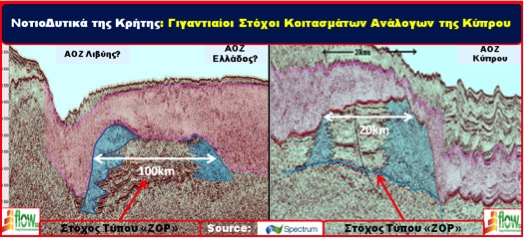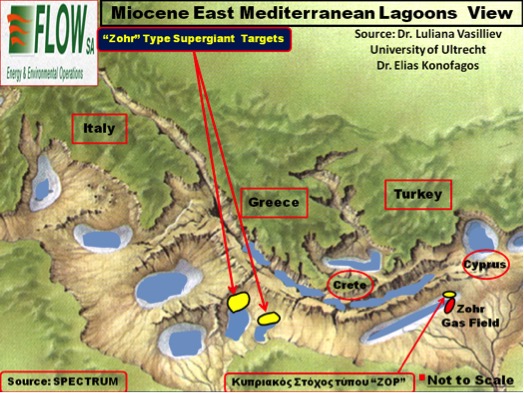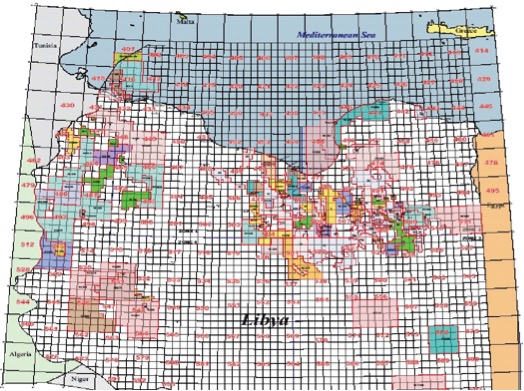31618 - Τhe EEZ leads to hypergigantic ZOHR type reefs Southwest of Crete
E. Conophagos, N. Lygeros, T. Fokianou, A. Foskolos
Translated from the Greek by Athena Kehagias
The Greek hydrocarbon research is currently focused upon the onshore and underwater regions of western Greece, which encapsulates classical limestone hydrocarbon target reserves.
Quite the contrary, most countries around us have already aimed at EMI’s new ZOHR type reef limestone research model.
In Cyprus in Particular, this effort was already initiated with the signatures of new research contracts with ExxonMobil and Qatar Petroleum in regards to marine block 10, TOTAL and ENI at marine block 6, and ENI at marine block 8.
As we’ve mentioned in a previous publication, at the Cypriot marine block 7, there’s a sandstone target reserve, similar in size to Leviathan, as well as a limestone target reserve (Reef) five times the size (500km2) of the ZOHR hypergigantic reserve (100km2). The greater part of this target lies within the Cypriot marine block 7 (see. Fig.1).
In addition we ought to note that even the problematic and fragmented Libyan Government, commissioned in the most official way, the geophysical company ION to seek – based upon EMI’s new research model – reefs at the offshore EEZ of eastern Libya.
As we’ve published prior, the results of this search in regards to the area Southwest of Crete were fascinating.
Hypergigantic reef target reserves were found, the size of which exceeds any previous one, at a global interest range. (see. Fig.2).
According to studies published – just a few weeks ago – by the American Geophysical Company Spectrum, Southwest of Crete there is a target, analogous to the abore mentioned five times greater than ZOHR Cypriot target reserve.
This target reserve is also five times greater than the Cypriot five times greater than ZOHR reserve. (see. Fig.2).
Taking into consideration that these limestone reef targets – which were created at paleolagoon coasts of the Late Miocene – are usually recurrent under Messinian salts,- three dimensional (3D) seismics will be required, in order to obtain a detailed cartography around the triple demarcation point of the EEZ’s of Libya, Greece, and Italy.
In order for Spectrum’s cartographic survey of reef limestone target reserves to become understood, we’ve used the Eastern Mediterranean paleolagoon map, as that was presented by Luliana Vasilliev of the University of Utrecht in Barcelona, Spain (see. Fig 3).
According to Spectrum, this area southwest of Crete, contains oil resources of at least 10 Bil, Barrels (Bbl), or 5.72 Tril, m3 (Tcm) of natural gas.
Taking into account the magnitude of these perspectives of reserve discoveries Southwest of Crete, as well as Libya’s assertions in the 4th concessions round back in 2004 (see. Figure 4).
The Chart which included Gavdos as well, and following the protests of both Greece and Italy was promptly repealed, the claims however remain.
There is therefore an urgent need for regulating the triple point of contact, of the EEZ between Greece, Italy and Libya, or else, the enormous wealth which unarguably ought to be there, will remain forever the property of our incompetence to formulate an appropriate prominence giving strategy of our mineral hydrocarbon wealth.




